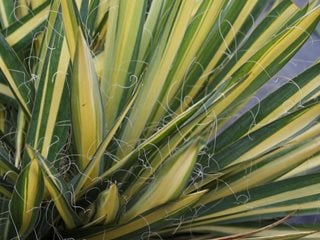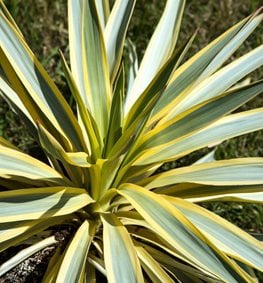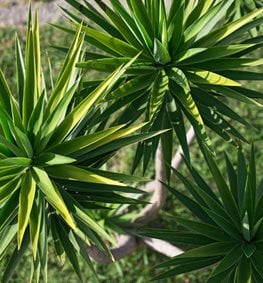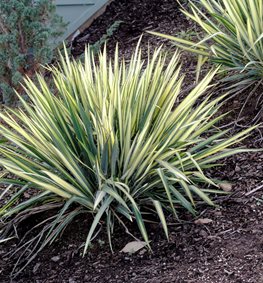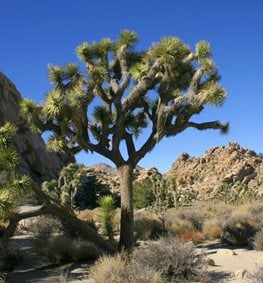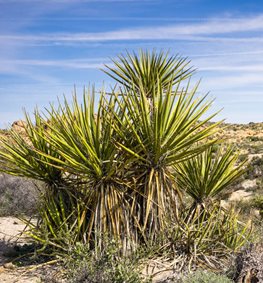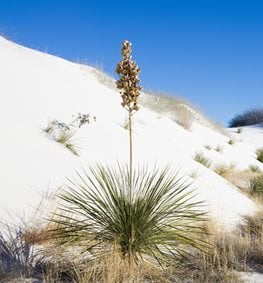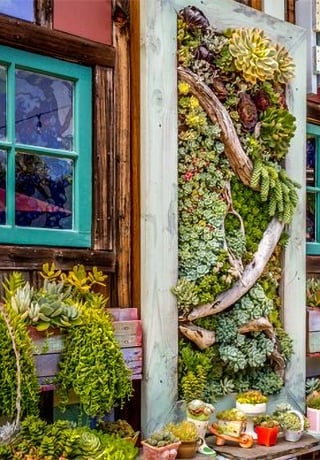HOW TO GROW YUCCA PLANTS
Growing and care information for these strong succulentsSentinels of the southwestern deserts, yuccas are extremely drought tolerant and store water in their trunks or bulbous bases. Their foliage grows in rosette form either at ground level or on stalks, trunks or branches. Many have leaves that are razor sharp and spine tipped, earning them common names of Spanish bayonet and Spanish dagger.
Yuccas are slow-growers and need almost no maintenance to survive. Their toughness is both a virtue and a vice, as they can be nearly impossible to get rid of once firmly established and larger clumping types may take over.
On this page: Yucca Basics | Planting Instructions | Care | Pictures | Design Tips | Growing Indoors
- YUCCA BASICS
- HOW TO PLANT YUCCA
- YUCCA PLANT CARE
- TYPES OF YUCCA PLANTS
- LANDSCAPE DESIGN TIPS
- GROWING INDOORS
YUCCA BASICS
Zones:
Range from zones 5 to 11, depending on type.
Height/Spread:
Varies by type. Smaller varieties can be 2 to 4 feet tall and wide, and larger tree types can reach 30 feet tall and spread to 25 feet wide with offsets. If offsets are allowed to remain, clumps can grow to be many times the size of the individual plant.
Exposure:
Full sun. A lack of sunlight can cause spindly foliage growth and decreased flowering.
Bloom time:
Varies by type; some will begin blooming in spring and others mid-to-late summer. Most varieties will bloom annually throughout their life — these are called polycarpic perennials. There are also monocarpic varieties, like Hesperoyucca whipplei (syn. Yucca whipplei), that flower only once then slowly decline and die, similar to many of their close relatives, Agave spp..
Color and characteristics:
Leaves can be thick or thin; usually long and narrow, sword-shaped, spine-tipped and arranged in rosettes. Foliage on some can be razor sharp. Flowers bloom on large stalks that emerge from the center of the plant, some over 10 feet tall. Flowers are usually white or cream, and some varieties may have a hint of pink, purple or green.
Toxicity:
The sharp and spiny nature of some yuccas is usually enough to steer animals (and people) away. However, if they are ingested, they can be moderately toxic to cats, dogs, and humans.
Yucca vs. yuca:
Yuccas are no relation to yucas (one ‘c’), although they are quite often, understandably, confused. Yuca, also commonly known as Cassava, is a plant with edible, starchy tubers/roots that tapioca and cassava flour are made from. The roots of the yucca plant are not edible.
HOW TO PLANT YUCCA
When to plant:
Start seeds indoors at any time, or outdoors in spring. To start hardy varieties outside, spring temperatures should be 55 to 65°F. Wait until temperatures are 66 to 75°F for more tender varieties.
Where to plant:
Select an area that receives partial to full sun, but most importantly, a location that is well-draining. Yuccas will develop root rot quite easily if there is residual or standing water. When choosing a location, consider the mature size of the yucca plant, as some grow to be quite large. Locate in areas where they can be appreciated, but not where their sharp, spiny leaves can be accidentally bumped into; away from walkways and play areas. Massive root structures can grow over time that have the power to crack foundations, disrupt retaining walls, and invade pools and irrigation pipes. These large root structures are extremely difficult to get rid of and any remnants left behind can grow more yuccas.
How to plant:
Soak seeds for 24 hours prior to planting to help with germination, or rub with sand paper to scar the surface. Plant at a depth of one to two seed lengths. Keep the seeds moderately moist, and you should begin to see signs of germination in about 3 to 4 weeks. Transplant the seedlings at about 8 weeks into bigger pots or permanent location. See more about growing from offsets below, under Propagation.
Other:
Yucca growth is quite slow and variable, especially if grown from seed. It may take a few years until they flower.
YUCCA PLANT CARE
Pruning:
Although technically not considered pruning, maintaining your plants by trimming dead or damaged leaves can be done at any time. Cutting the plant back to reduce its size should be done in early spring, right before the growing season.
- Simply cut off the top portion of a trunk down to the desired size. This will leave a sparse trunk for a while, but new offsets should sprout from the cut point. However, this growth can sometimes be unpredictable. At this same time, offsets can be cut away, and replanted if desired.
- For stemless rosette types, dead or damaged leaves along the bottom of the plant can be removed at any time to clean up the plant.
- Flower stalks should be cut back to the base after flowering. Some people don’t care for the look of the flower stalk, and in that case, it can be cut down at any time, even before it blooms.
Soil:
Yuccas aren’t particular about the type of soil they live in, other than it must be well-draining to avoid rot.
Amendments & fertilizer:
Although yuccas truly thrive on neglect, a balanced liquid fertilizer can be applied monthly during spring and summer, and may be especially beneficial to yuccas grown indoors.
Watering:
Yuccas are extremely drought tolerant, but will look better with regular watering of about an inch per week during spring and summer, along with an occasional deep soaking. They’ll require less water over winter. Yellow leaves and/or soft roots can be a sign of overwatering.
Propagation:
New starts can be grown from offsets, root cuttings or seed. If propagating from offsets, remove them in spring, strip off any foliage, and plant. Water them well to start and keep them protected until roots are growing.
Root cuttings can be taken in winter or spring from mature plants. Dig down and cut a 3-inch section from the existing root structure. Keep the cutting in a cool, dry place for a couple of days before planting. Place it in potting soil and in a location where it will receive indirect light. Roots should begin to grow in about three to four weeks.
See above in How to Plant for more information on growing from seed. Flowering yuccas may need some help by hand pollinating them in order to produce seed. Note that only species plants will come true from seed and not all seed will be fertile.
Diseases and pests:
Although there are no serious insect or disease problems, cane borers, scale insects and fungal leaf spots can occur. Brown leaf spot can often be caused by overhead watering, so it’s always best to water at the base of the plant. Stem rot is one of the most common problems with yuccas, but can be avoided with well-draining soil.
Due to their sharp and spiny nature, yuccas are deer resistant.
Yucca moths:
At night, yucca flowers emit a fragrance that attracts yucca moths. They’re vital contributors to the plant’s survival as their only pollinator. In return, yuccas are the only host plant for the moths. Most yucca moths have white wings that help them blend in with the blossoms they pollinate and then lay their eggs in. Their caterpillars feed on the seeds, but leave some behind so the plant can re-seed itself.
TYPES OF YUCCA PLANTS
LANDSCAPE DESIGN TIPS
- Locate yuccas well away from walkways or play areas to avoid accidental injury from coming in contact with their sharp leaves. Additionally, consider the mature size of the plant to make sure it’s located far enough away that it won’t become a problem in the future.
- Excellent choice for drought-tolerant or rugged gardens.
- Avoid pairing with plants that require regular water, as this can lead to trouble for yuccas.
- Smaller varieties make great container plants, giving the ability to grow in colder climates by moving indoors over winter and placing back outside after any chance of frost.
- Best choices for colder climates include: Yucca filamentosa, Y. flaccida, Y. glauca, Y. gloriosa, Y. harrimaniae, and Y. schottii.
- Grow alongside plants with similar needs usch as black-eyed Susan, coreopsis, lantana, lavender, salvia, sedum, or spurge.
GROWING INDOORS
- You can also grow a yucca plant indoors, and spineless varieties such as Y. elephantipes, are popular houseplants. Their leaves are long and pointed, but don’t have the razor-sharp quality of other yuccas.
- These slow-growers are easy to care for and simply need a sturdy pot with well-draining soil and some sun — a south-facing window with lots of indirect light is perfect.
- Water them once a week or so during the summer, letting the soil dry out in between, as consistently moist soil will cause root rot. They will require much less water in winter.
- Yuccas grown indoors can benefit from a monthly application of a general purpose fertilizer once a month in spring and summer. Indoor yuccas will rarely produce flowers.
- If your indoor yucca does eventually outgrow its space, it can be cut back in early spring. This can be done by simply cutting off the top section of a trunk or stem. However, regrowth is never guaranteed. New offsets should begin to form at the cut section. The lopped off top section can be re-potted as well, but again, success can be unreliable.
RELATED:
Types of Succulents
Modern Plants for a Bold and Beautiful Garden
16 Surprisingly Drought-Tolerant Plants
